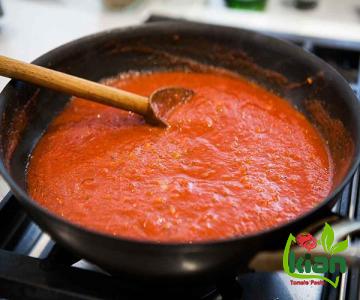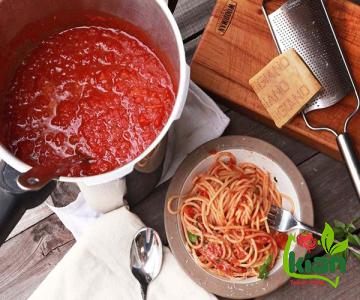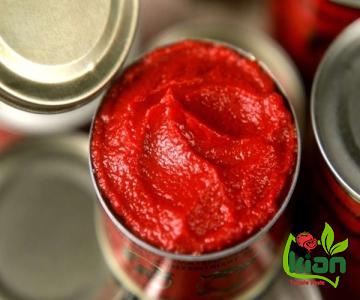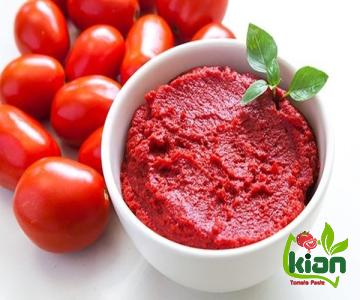Whether you are a culinary enthusiast or a seasoned chef, you must be aware of the crucial role tomato paste plays in adding depth and flavor to various dishes. However, not all tomato pastes are created equal. In some unfortunate instances, consumers may encounter a bitter taste when using certain products. This article aims to explore the reasons behind bitter tomato paste and shed light on how consumers can identify and avoid it. Understanding Bitter Tomato Paste: Bitterness in tomato paste can arise due to several factors during its production process. Bitter taste can be a result of the tomato variety used, improper handling and processing, overcooking, or storing the paste for an extended period.

.
 Additionally, the presence of high levels of acidity and unripened tomatoes can also contribute to its bitter flavor. Quality Control and Ingredient Selection: To combat the issue of bitter tomato paste, it is crucial for manufacturers to exercise stringent quality control measures throughout the production cycle. This includes strict adherence to industry standards and selecting the finest tomatoes that have reached optimal ripeness. Careful handling and processing techniques can help retain the natural sweetness of the fruit while minimizing bitterness. Production Techniques and Timing: Tomato paste can undergo several processing methods, which can affect its flavor profile. Overcooking tomatoes, especially when exposed to high heat for a prolonged period, can lead to caramelization and bitterness.
Additionally, the presence of high levels of acidity and unripened tomatoes can also contribute to its bitter flavor. Quality Control and Ingredient Selection: To combat the issue of bitter tomato paste, it is crucial for manufacturers to exercise stringent quality control measures throughout the production cycle. This includes strict adherence to industry standards and selecting the finest tomatoes that have reached optimal ripeness. Careful handling and processing techniques can help retain the natural sweetness of the fruit while minimizing bitterness. Production Techniques and Timing: Tomato paste can undergo several processing methods, which can affect its flavor profile. Overcooking tomatoes, especially when exposed to high heat for a prolonged period, can lead to caramelization and bitterness.
..
 Manufacturers must implement precise cooking times and temperatures to preserve the natural flavors and avoid the formation of unwanted bitterness. Correct Storage and Shelf Life: Another critical aspect to consider is the proper storage and shelf life of tomato paste. Prolonged storage can cause the paste to deteriorate, resulting in flavor changes, including bitterness. Manufacturers should ensure that the appropriate packaging and storage conditions are maintained to extend the shelf life and maintain the quality and taste of the tomato paste. Consumer Tips: To ensure that you choose a high-quality tomato paste without any bitterness, consider the following tips: 1. Check the ingredient list: Look for tomato paste made from ripe tomatoes and avoid products that contain additives, preservatives, or artificial flavors.
Manufacturers must implement precise cooking times and temperatures to preserve the natural flavors and avoid the formation of unwanted bitterness. Correct Storage and Shelf Life: Another critical aspect to consider is the proper storage and shelf life of tomato paste. Prolonged storage can cause the paste to deteriorate, resulting in flavor changes, including bitterness. Manufacturers should ensure that the appropriate packaging and storage conditions are maintained to extend the shelf life and maintain the quality and taste of the tomato paste. Consumer Tips: To ensure that you choose a high-quality tomato paste without any bitterness, consider the following tips: 1. Check the ingredient list: Look for tomato paste made from ripe tomatoes and avoid products that contain additives, preservatives, or artificial flavors.
…
 2. Look for recognizable brands: Trusted brands often have strict quality control measures in place to ensure a consistent and pleasant taste. 3. Color and consistency: Opt for tomato paste with a rich red color and a smooth and thick consistency, as these factors often indicate a well-made product. 4. Taste test: When trying a new brand or product, consider doing a small taste test before using it in a recipe. This will help you identify any potential bitterness. Conclusion: While bitter tomato paste can be an unpleasant surprise, understanding its causes and taking appropriate measures can help consumers avoid this issue. Manufacturers should prioritize using high-quality ingredients and employing precise processing techniques to ensure a flavorful and enjoyable tomato paste experience. As consumers, we have the power to make informed choices and demand only the best when it comes to our culinary creations.
2. Look for recognizable brands: Trusted brands often have strict quality control measures in place to ensure a consistent and pleasant taste. 3. Color and consistency: Opt for tomato paste with a rich red color and a smooth and thick consistency, as these factors often indicate a well-made product. 4. Taste test: When trying a new brand or product, consider doing a small taste test before using it in a recipe. This will help you identify any potential bitterness. Conclusion: While bitter tomato paste can be an unpleasant surprise, understanding its causes and taking appropriate measures can help consumers avoid this issue. Manufacturers should prioritize using high-quality ingredients and employing precise processing techniques to ensure a flavorful and enjoyable tomato paste experience. As consumers, we have the power to make informed choices and demand only the best when it comes to our culinary creations.











Your comment submitted.